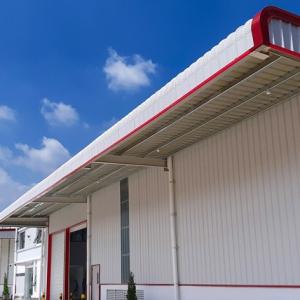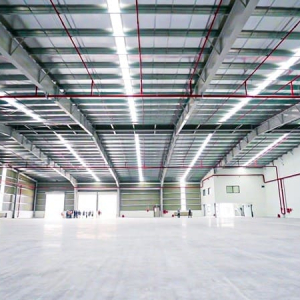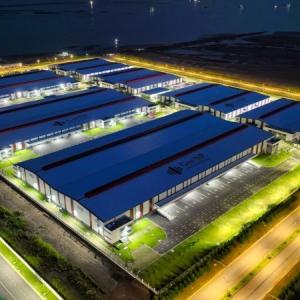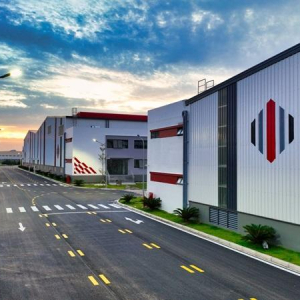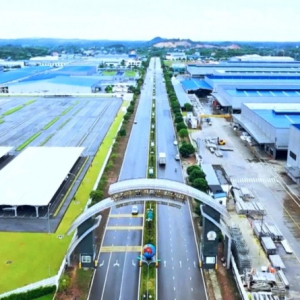Renting manufacturing factories: Choice of many FDI electronic businesses
September 05, 2024 07:03 AM
In recent years, industrial real estate in Vietnam has become a bright spot attracting many businesses with foreign direct investment (FDI). Among them, the increase in FDI electronic businesses has led to a high demand for renting manufacturing factories. 1. Vietnam and the potential to become the world’s workshop 1.1. General position in the economy […]
In recent years, industrial real estate in Vietnam has become a bright spot attracting many businesses with foreign direct investment (FDI). Among them, the increase in FDI electronic businesses has led to a high demand for renting manufacturing factories.
1. Vietnam and the potential to become the world’s workshop
1.1. General position in the economy
According to reports from the Ministry of Construction, the demand for renting industrial manufacturing factories by FDI investors tends to increase, especially in provinces such as Thai Nguyen, Quang Ninh, Nam Dinh, Hai Phong, Bac Giang, Bac Ninh,… This has contributed to the increase in FDI capital inflows into Vietnam in the real estate sector, reaching USD 1.53 billion by the end of July 2023.
Currently, the real estate leasing sector ranks third in Vietnam’s entire industry. Moreover, the occupancy rate of existing manufacturing factories is nearly 80% in the Northern region and 85% in the Southern region.
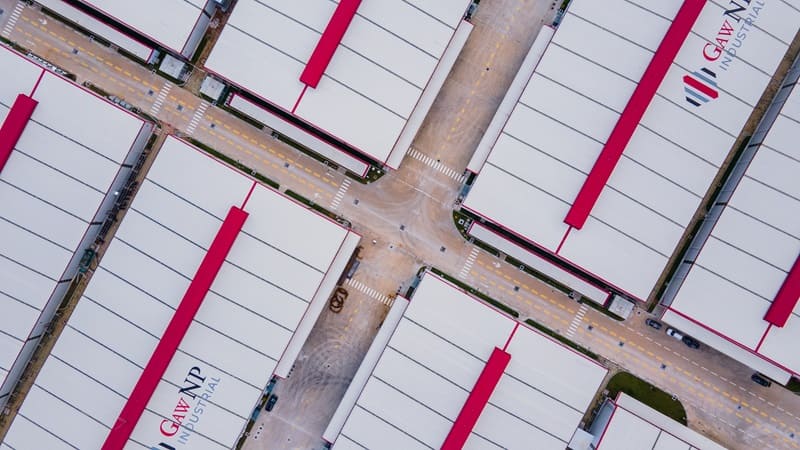
The increase in demand for industrial real estate for rent in Vietnam in recent years
To achieve this rate, Vietnam’s advantages, such as its strategic geographical location, various government tax support policies for businesses, factories with appropriate incentives, and commitments to reduce carbon emissions, must be mentioned. These advantages have gradually propelled Vietnam and affirmed its position in the global supply chain. Vietnam also holds a significant market share internationally in industries such as electronics, textiles, and consumer goods.
A clear testament to this is the migration of major global corporations to Vietnam in recent years, such as Samsung, Foxconn, Intel, Pegatron, Luxshare, Goertek, with projects amounting to billions of USD. In 2023 alone, Vietnam welcomed additional projects worth hundreds of millions of USD from Apple manufacturers such as Quanta Computer, Compal.
In addition to asserting its position in the market, Vietnam is becoming an indispensable link in the global value chain.
1.2. Convenient connectivity due to strategically advantageous location
Vietnam holds a strategically advantageous geographical position for international trade as it is both a central hub in the region and a crucial gateway to penetrate the economies in the West of the Indochinese Peninsula. This has helped Vietnam attract more FDI businesses than India and Singapore in the Southeast Asian region.
Furthermore, Vietnam’s location is close to China, the country with the second-largest population in the world and a potential market for businesses. Additionally, Samsung’s establishment of factories in Vietnam to produce phones and tablets has resonated significantly in the real estate market.
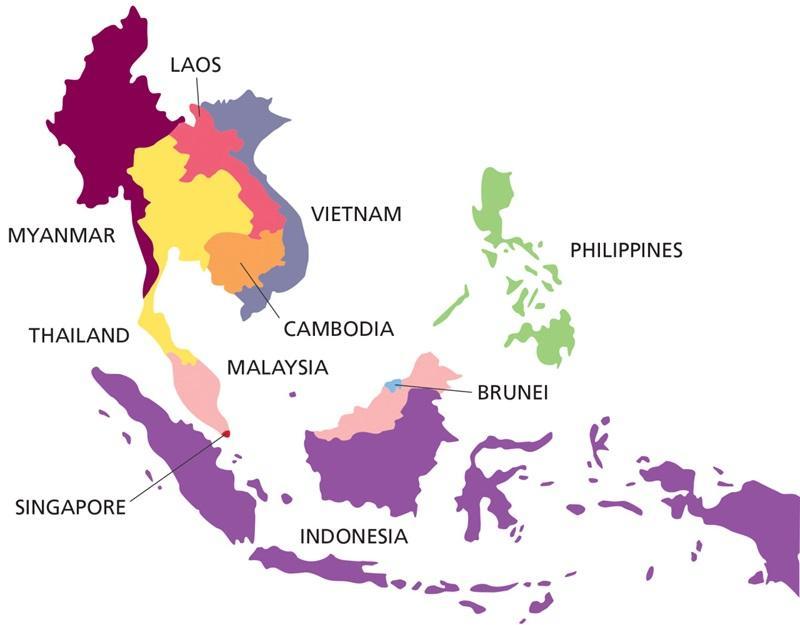
Vietnam holds a strategically advantageous geographical position in the Southeast Asian region
Not only because of its central role in Southeast Asia, but Vietnam also has the ASEAN community with around 650 million people, a market larger than the EU with a GDP of nearly USD 4 trillion. Achieving this position cannot be without considering the government’s supportive policies for businesses, coupled with incentives for large FDI projects.
Moreover, the Vietnamese market with 100 million people and a rapidly growing middle class, creating substantial purchasing power, has become an attractive advantage for many foreign businesses
1.3. Road Transport Capability
According to the Logistic Performance Index (LPI) published by the World Bank, Vietnam’s index is currently at a growth level, reaching 3.3 points in 2023. This figure demonstrates Vietnam’s continuous efforts over the past 16 years to upgrade its logistics infrastructure and transportation.
Thanks to its strategic and advantageous geographical location, Vietnam continues to witness significant transformations in the logistics sector, with an average annual growth rate ranging from 14% to 16%, and a scale of 40 – 42 billion USD.
Especially noteworthy is Vietnam’s road network potential for development, serving as a crucial route connecting Guangdong and Shanghai provinces in China. Simultaneously, it links with the export-oriented consumer goods and industrial centers of China to ASEAN countries. This trans-Asian route, when reaching Northern Vietnam, forms a straight path, allowing faster and more cost-effective transportation of goods by road compared to sea or air routes.
Additionally, Vietnam boasts one of the longest and most vibrant coastlines globally, providing an advantage in trade with neighboring countries. Notably, it facilitates logistic services for imports and exports between Laos, Cambodia, China, and some ASEAN or U.S. countries through port clusters in the southern region. By passing through these ports and moving an additional 200 km by road, it shortens the distance, time, and costs significantly compared to detouring through Sihanoukville Port.

Road infrastructure in Vietnam helps businesses save time and costs
1.4. Development of Air Transport
With over 30 years of development, the aviation transport sector in Vietnam has experienced breakthrough growth, averaging 15.3% per year from 1991 to 2022.
In 2021, while the number of passengers decreased, the volume of air cargo transportation saw a remarkable increase of 1.5 million tons with a sharp rise in costs. By 2022, the aviation transport sector reached 1.28 million tons, with international cargo reaching 1.02 million tons.
Moreover, the collaboration between Vietravel Airlines and ASEAN Cargo Gateway (ACG) has given rise to VUAir Cargo, specializing in air cargo transportation, contributing to the growth potential of the aviation transport sector in Vietnam.
Given the current growth rate, Vietnam needs to continuously invest in infrastructure. According to the projected plan, by 2030, Vietnam will have a total of 14 international airports and 17 domestic airports to serve the international cargo transportation process.

Freight transport by air has experienced strong growth since the Covid-19 pandemic
1.5. Room for Industrial Development
Industrial real estate in Vietnam, especially the market for renting manufacturing factories, still has significant room for development due to relocation trends, location advantages, infrastructure upgrades, and the provision of preferential services, maintaining the demand of many FDI businesses.
Renting manufacturing factories helps both FDI and domestic businesses save time and costs. With a suitable budget, factories can quickly become operational efficiently.
In particular, the demand for renting manufacturing factories from FDI electronic businesses is high, and factory scales typically need to cover large areas from 5,000 to over 10,000 square meters to meet the operational needs of production lines. If investors can capture this demand, it will be an extremely potential customer segment during this period.
2. GNP Yen Binh 1 & GNP Yen Binh 2 Industrial Center
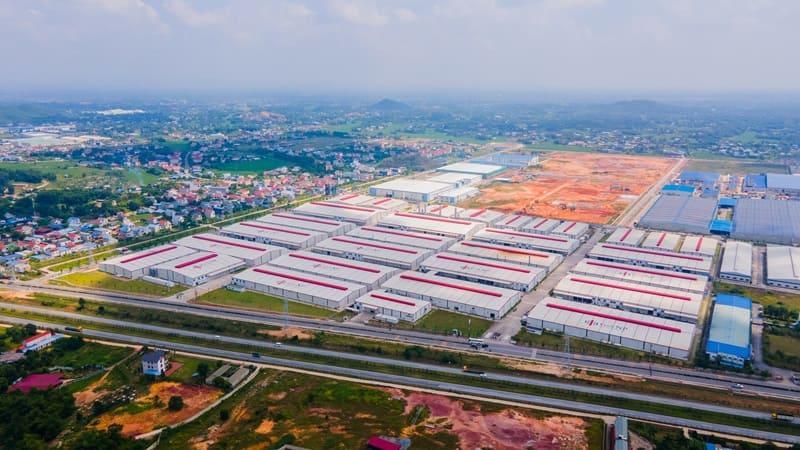
Renting Manufacturing factories at GNP Yen Binh 1 & 2
GNP Yen Binh 1 & GNP Yen Binh 2 is one of the flagship projects in Thai Nguyen by the Gaw NP Industrial group. This industrial center spans 29.5 hectares, with 20% covered in greenery. The total investment for this project is 3.82 trillion VND, making it a preferred destination for many FDI businesses in the electronics sector specifically, and industrial manufacturing in general.
Businesses leasing manufacturing factories at GNP Yen Binh 1 & 2 will benefit from strategic location advantages such as proximity to Noi Bai Airport, Hanoi, Cai Lan Port, Lach Huyen Port, Cat Bi International Airport, and especially proximity to China.
Currently, GNP Yen Binh 1 & 2 hosts the production plants of various businesses due to its optimized design without columns, maximizing space. The design includes 1.2-meter brick walls combined with floor loads ranging from 2 to 2.5 tons/m2. Additionally, GNP Yen Binh features a 3-phase power system with capacities of 250 – 500 KVA, electricity and water systems, firefighting systems, wastewater treatment, and 24/7 security, catering to the production needs of various large industries.
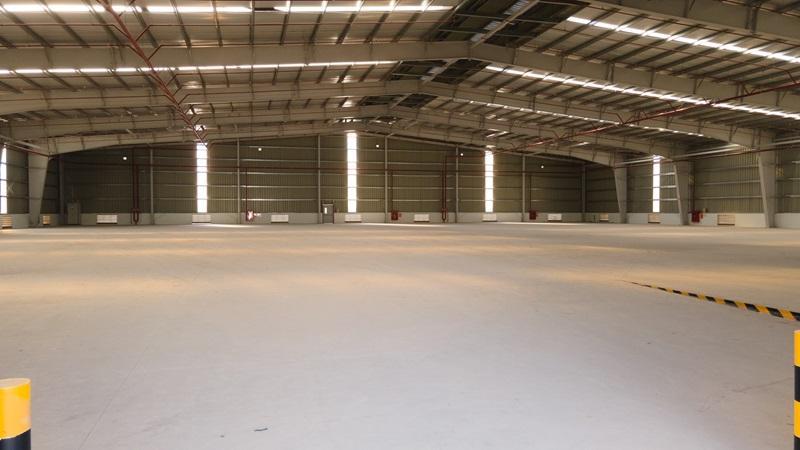
The column-free design optimizes space and interior area within the factory
3. Conclusion
The provided information partially illustrates Vietnam’s potential to become a global manufacturing hub in the near future, attracting numerous major FDI enterprises. Furthermore, if you are seeking to rent a manufacturing factory in Vietnam, feel free to contact Gaw NP Industrial through the hotline: + 0789 75 77 88 to receive assistance from their advisory team!
See more:
Discover the strategic benefits of expanding production with ready-built factories in Hai Phong
Why the strategic location of Thai Nguyen drives high demand for factory rentals
Warehouse for lease in Vietnam | Warehouse for rent in Vietnam | Factory for lease in Vietnam | Factory for rent in Vietnam
